The American Institute of Architects (AIA) has selected the 2017 recipients of the Institute Honor Awards, the profession’s highest recognition of works that exemplify excellence in architecture, interior architecture and urban design.
Selected from roughly 700 submissions, 23 recipients located throughout the world will be honored at the AIA Conference on Architect 2017 in Orlando.
The program recognizes work across three categories: Architecture, Interior Architecture, and Regional & Urban Design
Here are the 2017 winners:
Institute Honor Awards for Architecture
Aspen Art Museum; Aspen, CO
Shigeru Ban Architects; Associate Firm: CCY Architects
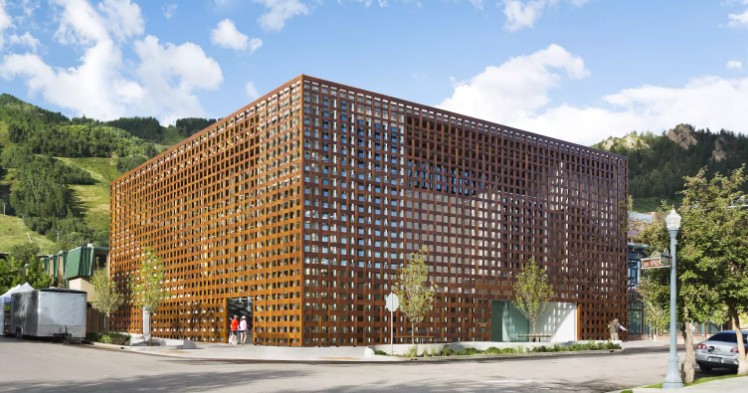
Founded in the late 1970s as a non-collecting institution, the Aspen Art Museum worked in tandem with the design team to determine programmatic needs and to ensure its new home completely supported the art it hangs. Adhering to a strict 18-month construction schedule, the new museum opened in 2014 and has seen a 400 percent increase in visitorship and a 1,140 percent increase in the number of students served by the museum’s educational outreach initiatives. Three floors—two above ground, one below—are dedicated to gallery space, while the top floor includes an ample multiuse space, café, and public terrace with sweeping views of the Rockies. Photo: Michael Moran
Carmel Place; New York City
nARCHITECTS

Winner of the 2012 adAPT NYC competition for New York City’s first micro-unit apartment building, Carmel Place represents a new housing paradigm for the city's growing small household population. The design of the 9 story building’s 55 units aims for spaciousness and luminosity through the implementation of 9’-8” ceilings, 8’ tall sliding windows and Juliet balconies. With a goal of conveying the residents’ nested scales of community, afforded by varied interior and exterior shared spaces, the building’s brick exterior massing resembles four slender “mini-towers” – a microcosm of the city’s skyline. Photo: Field Condition
Carnegie Hall Studio Towers Renovation Project; New York City
Iu + Bibliowicz Architects LLP
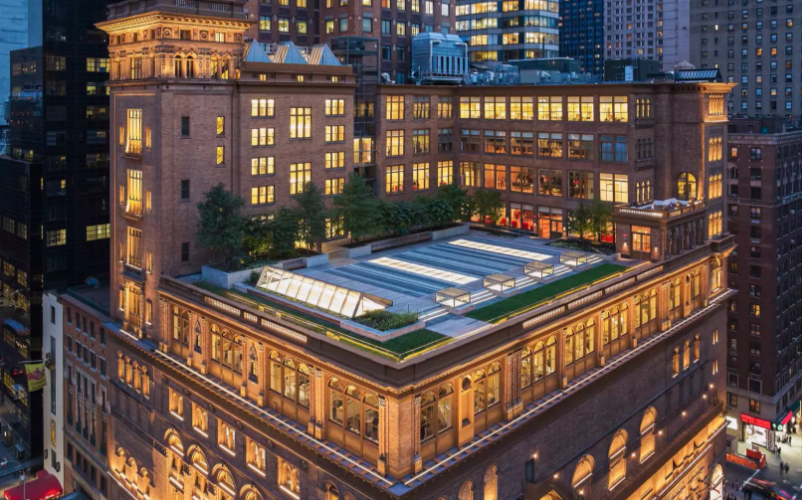
The Carnegie Hall Studio Towers Renovation Project centered on: renovation, reorganization, and repurposing of 167,000 square feet of non-performance venues at the National Historic site. The 7-year project encompassed the creation of a Music Education Wing, new roof terrace, consolidation of administrative offices, expanded backstage space and functionality, and façade lighting to showcase the landmark. Substantial interior structural modifications and infrastructure upgrades aided in the success of the renovation. The project was awarded LEED Silver Certification, one of the oldest and most notable buildings in the country with such distinction. Photo: Jeff Goldberg/Esto
The Cotton Gin at the CO-OP District; Hutto, Texas
Antenora Architects LLP
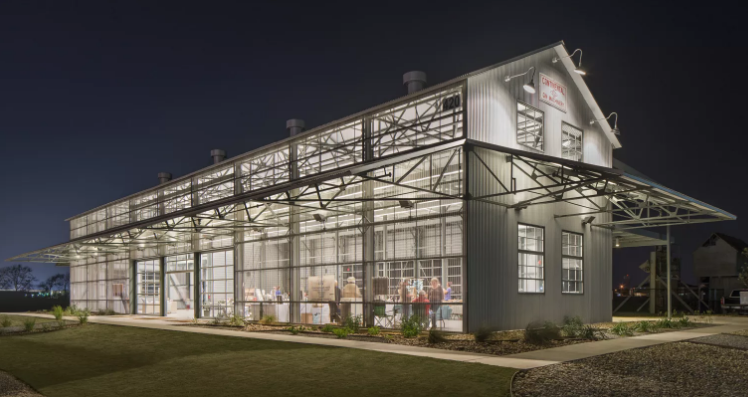
The reuse of the two existing cotton gin structures is the first piece of a 2012 master plan to revitalize the site, which was purchased by the City of Hutto. Both structures were selectively deconstructed and reused to create a single open-air 6,500-square-foot public events space. The new building is wrapped in perforated stainless steel that reflects the hot Texas sun during the day and provides intriguing transparency at night. The design team succeeded in creating a flexible space for public and private events that complements everything from programmatic functions of the local library and farmer’s markets to artisan fairs and wedding receptions. Photo: Brian Mihealsick
Grace Farms; New Canaan, CT
SANAA; Associate Firm: Handel Architects
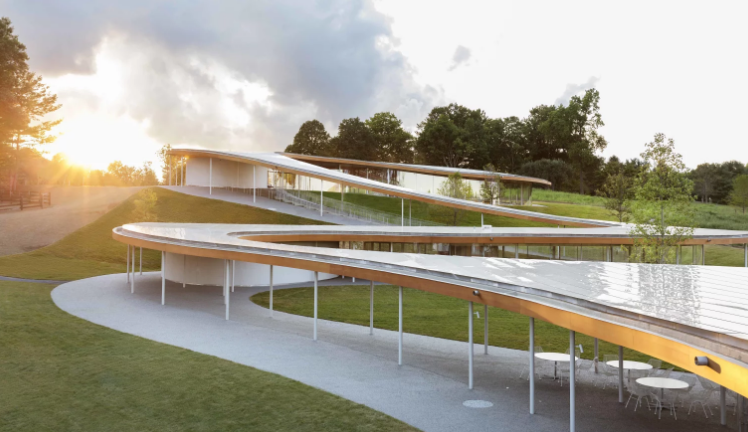
Grace Farms was established with the idea that “space communicates” and can inspire people to collaborate for good. To realize this vision, Grace Farms Foundation appointed SANAA to create a porous, multipurpose building nestled within an 80-acre landscape that would encourage people to engage with nature, the arts, justice, community, and faith. The River building emerged as a new kind of public space that embodies these aspirations. Its sinuous structure is comprised of 203 individually curved glass panels containing five volumes: a Sanctuary; Library; Commons; Pavilion; and partially submerged Court. Photo: Dean Kaufman
Reva and David Logan Center for the Arts; Chicago
Tod Williams Billie Tsien Architects | Partners; Associate Firm: Holabird & Root
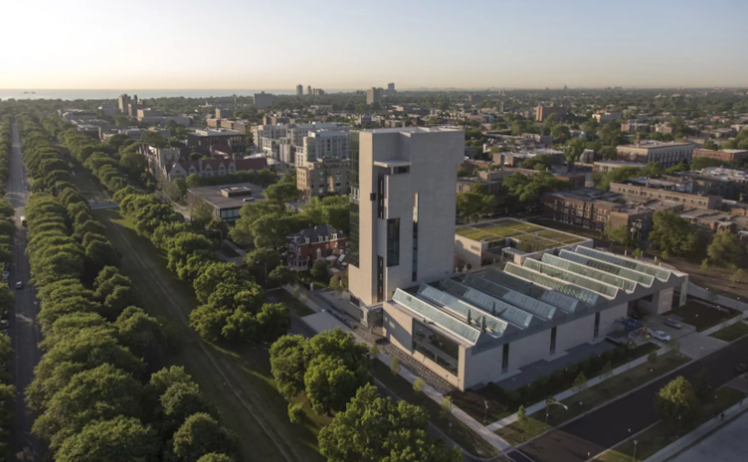
Sitting on the southern edge of Chicago’s Midway, the Center houses the University of Chicago’s visual arts, film, music, and theater programs, finally uniting the programs under one roof. The building comprises a 10-story tower and an adjacent two-story “podium.” Both are clad in Missouri limestone cut into four-foot lengths and laid as bricks. The material echoes the limestone found on the University’s neo-Gothic structures as well as Frank Lloyd Wright’s Robie House, also located on campus. Bathed in natural light, the smaller building is lit by north-facing skylights throughout its many creative spaces. Photo: Tom Rossiter/The University of Chicago
St. Ann's Warehouse; Brooklyn, New York
Marvel Architects
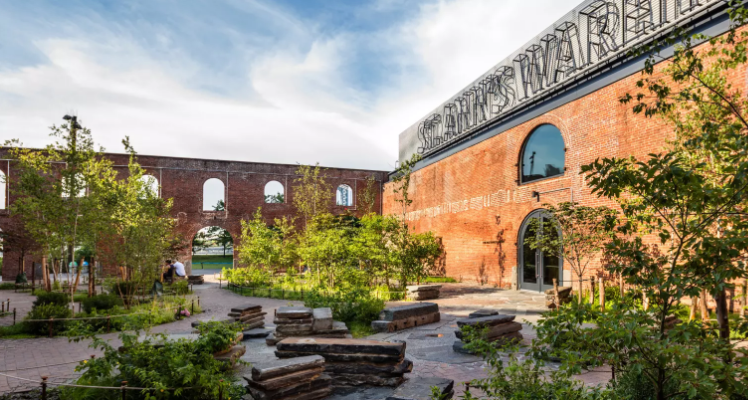
Beneath the Brooklyn Bridge, Marvel Architects has brought the brick and mortar ruins of the historic Tobacco Warehouse back to life, creating a new theater space for renowned presenter St. Ann's Warehouse. Leading a team of Silman, Buro Happold and Charcoalblue, Marvel created a controlled acoustical environment using natural state materials - concrete, blackened steel, Douglas fir plywood. With a respectful sleight of hand, a new roof floats atop a ribbon of solid glass brick. Adjacent to the theater is a trapezoidal garden designed with Michael Van Valkenberg Landscape. Photo: David Sundberg/ESTO
The Six Affordable Veteran Housing; Los Angeles
Brooks + Scarpa
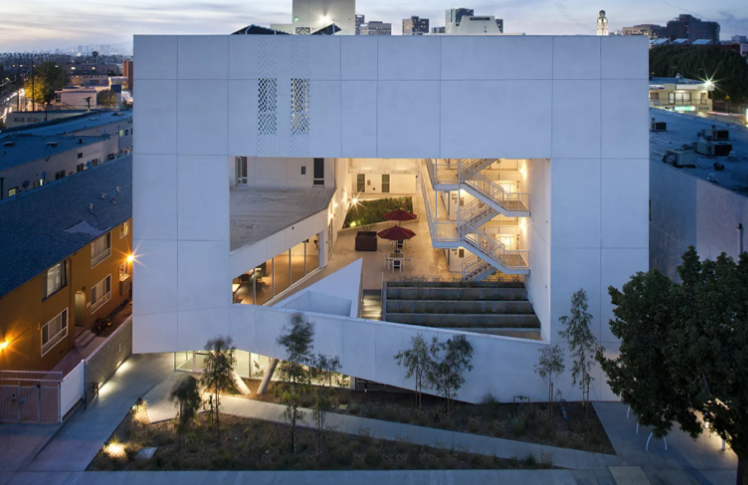
The SIX is a 52-unit LEED Platinum affordable housing and support services building for disabled veterans. Located in the MacArthur Park area of Los Angeles which has one of the highest densities in the USA with a total population of 120,000 people in 2.72 square miles. The SIX breaks the prescriptive mold of the traditional shelter by creating public and private "zones" in which private space is deemphasized, in favor of large public areas. The organization is intended to transform the way people live-away from a reclusive, isolating layout towards a community-oriented, interactive space. Photo: Tara Wujcik
Stanford University Central Energy Facility; Stanford, CA
ZGF Architects LLP
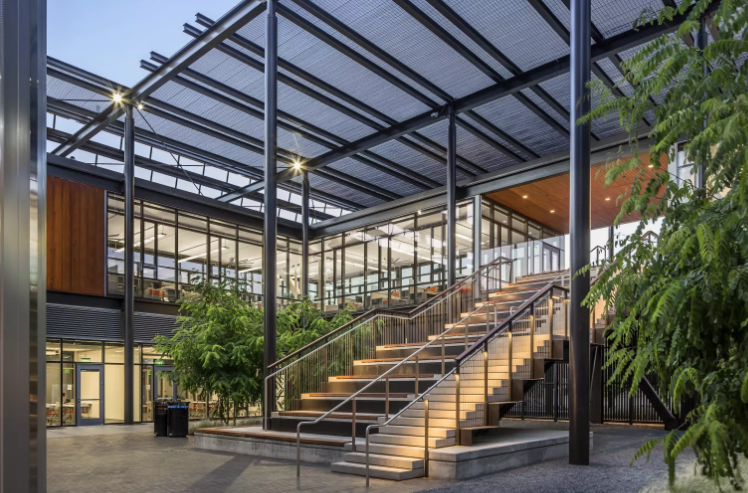
The Central Energy Facility is the heart of Stanford University's transformational campus-wide energy system, projected to reduce greenhouse gas emissions by 68%. The centerpiece of this composition of large, industrial components is a central courtyard pivoting around a 2.5-million-gallon hot water thermal storage tank, showcasing the energy plant’s mission. The architecture takes its cues from Stanford’s rich heritage: the Stanford arcade is reimagined as PV trellis; integrally colored cast-in-place concrete nods to the prevalent limestone; and weathered CorTen steel accents suggest terra-cotta tile roofs that give the campus much of its character. Photo: Robert Canfield
Thread: Performing Arts Community Center and Artists’ Residence; Sinthain, Senegal
Toshiko Mori Architect
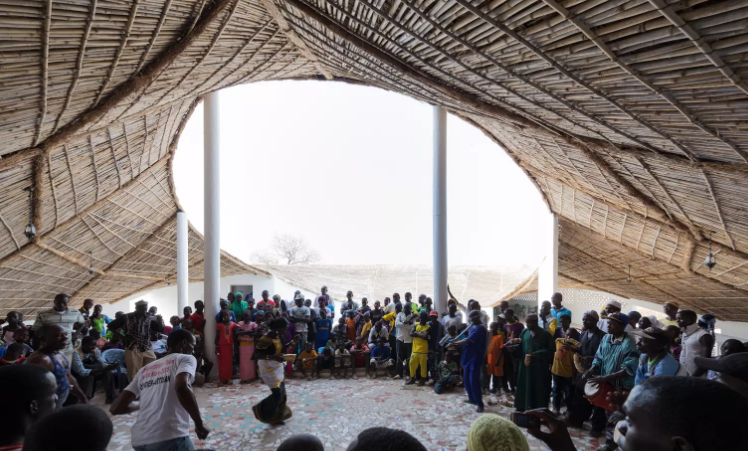
Located in the remote village of Sinthian, Senegal, this project offers multiple programs for the community, including a gathering space, performance center, and residency for visiting artists. In the design, a parametric transformation of the traditional pitched roof inscribes a series of courtyards within the plan of the building while also creating shaded, multi-purpose areas around the perimeter of the courtyard. The inversion of the roof creates an effective strategy for the collection and storage of rainwater, capable of fulfilling substantial domestic and agricultural water needs for the community. Relying exclusively on local materials and construction techniques, the building’s traditional structure is formed primarily of bamboo and spaced-brick walls that absorb heat and promote airflow through the building interior. Photo: Iwan Baan
Yale Center for British Art Building Conservation Project; New Haven, CT
Knight Architecture
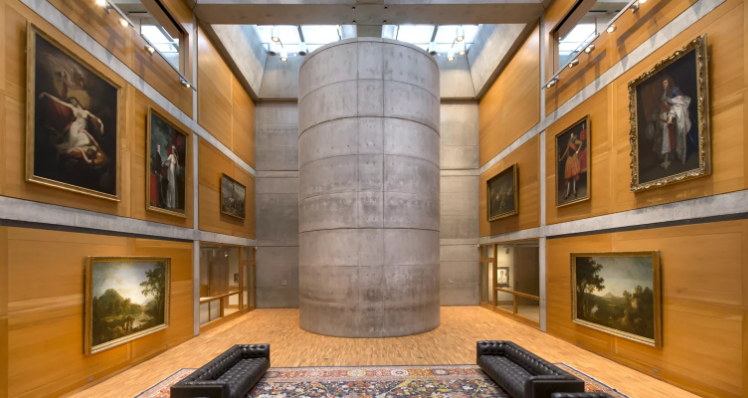
Following nearly forty years of continuous operation, the Yale Center for British Art, designed by Louis I. Kahn and recipient of AIA’s Twenty-five Year Award, faced mounting programmatic, infrastructural, and operational pressures which threatened to degrade its extraordinary architectural character. The multi-year conservation project renewed interior finishes that had grown tired and worn; restored and expanded teaching spaces that were oversubscribed and underequipped; fortified spaces for exhibition, storage, and study of the growing collection; and replaced vital building systems which had reached the end of their practical life. Photo: Richard Caspole, Yale Center for British Art
Institute Honor Awards for Interior Architecture
30 Rockefeller Plaza: 65th Floor, Rainbow Room, SixtyFive; New York City
Gabellini Sheppard Associates; Associate Firm: Montroy Andersen DeMarco
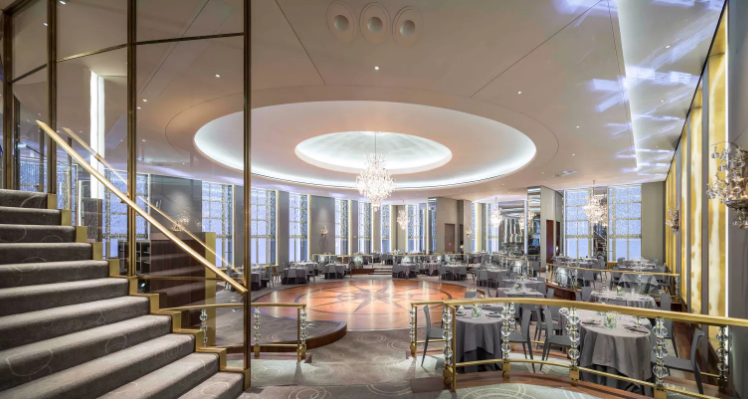
Gabellini Sheppard Associates opened a new chapter for the 13,160-square-foot Rainbow Room and 65th floor, blending contemporary needs with design that rekindled the room’s original Art Deco-inspired spirit and radiant notoriety of 1934. In the Rainbow Room, the revitalization of the rotating dance floor, addition of mesmerizing crystal window veils, and restoration of the chandelier and central dome, reinforce the modern-day grandeur. In Bar SixtyFive, a faceted ceiling composed of glass-reinforced gypsum panels anchor the space, reinterpreting the open-air height the room once had as a sun parlor. Photo: Paul Warchol Photography
General Motors Design Auditorium; Detroit
SmithGroupJJR

In 1956, the General Motors styling team moved from Detroit to a new design space. The complex, originally designed by Eero Saarinen, has become a legendary corporate master piece of planning and design. For SmithGroupJJR, the overall design intent was to modernize the facility but to do so in a manner consistent with the original Saarinen detailing. Technologies of materials, lighting and audio/visual have progressed dramatically and the revised Design Dome is now poised for General Motors to re-establish the relevance of this significant space for the design community. Photo: James Haefner Photography
George Washington University, Milken Institute School of Public Health; Washington, D.C.
Payette
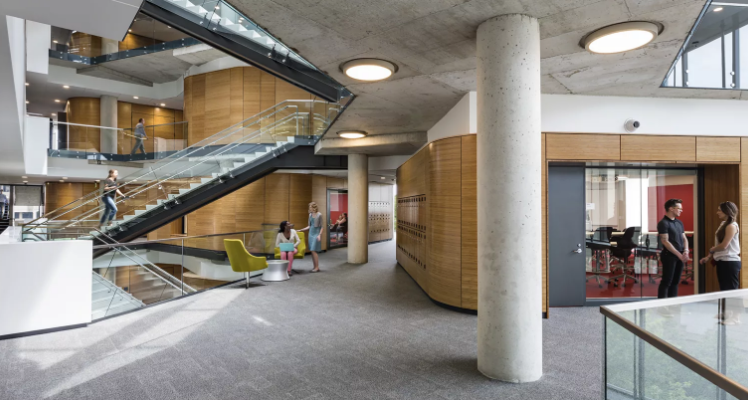
Located on iconic Washington Circle Park in the heart of the nation’s capital, this School of Public Health is a rigorous, innovative response to site and program. With its most sustainable solutions so deeply embedded as to be nearly indistinguishable, it keenly demonstrates the symbiotic relationship between sustainability and public health. The building’s unusual skylit atrium, in which classrooms and study areas overlook the city through an open latticework of floor openings, invites exploration and discovery. The building supports a highly effective learning and interaction environment that is equally memorable for its intimacy and transparency. Photo: Robert Benson Photography
In Situ; San Francisco
Aidlin Darling Design
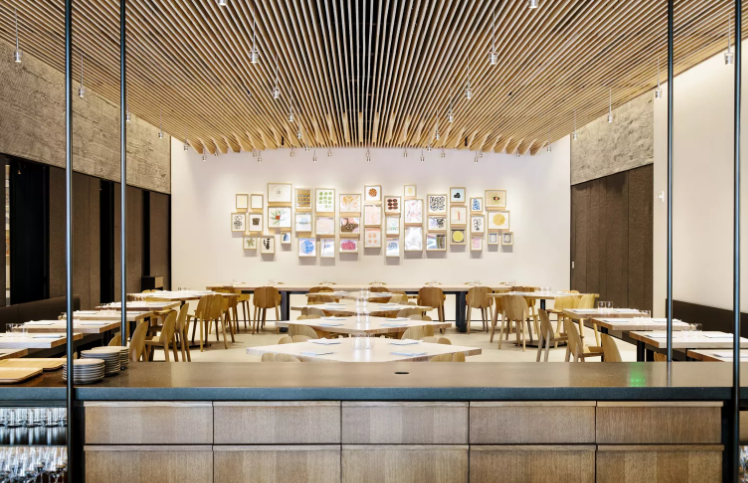
Located in the recently reopened San Francisco Museum of Modern Art (SFMoMA), In Situ represents a unique intersection of art, design, food and community. The restaurant features a curated collection of culinary innovators from around the world to make their contributions accessible for greater public engagement. Its design operates at many scales from urban to the intimate, and is intended to engage all of the senses with an emphasis on tactility and acoustics. The exposed interior shell of the building provides a backdrop for discreetly placed "artifacts" which include commissioned art, custom designed lighting, custom furniture and a sculptural wood ceiling. Photo: Alanna Hale Photography
Pinterest HQ; San Francisco
IwamotoScott Architecture with Brereton Architects
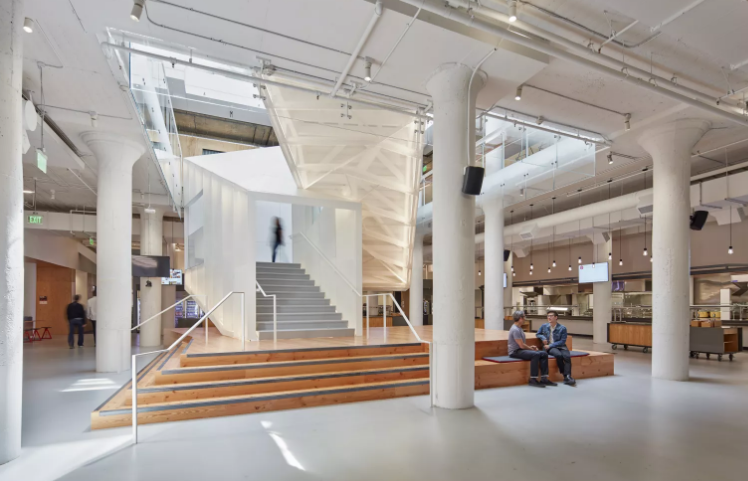
The new Pinterest headquarters is inspired by the redesign of the company's web platform — clean, simple, intuitive. It occupies a concrete structure in the SOMA district that previously housed a John Deer factory. A key aspect of the design extends the existing atrium through to the ground floor, spatially connecting all four floors. The Knitting Stair occupies this newly-activated heart of the building. The workspace program is organized as porous, concentric layers around the atrium and Knitting Stair, opening up to the city at the ground floor’s lobby, café, all-hands space and maker lab. Photo: Bruce Damonte
University of Massachusetts (UMass) Dartmouth, Claire T. Carney Library; Dartmouth, MA
designLAB architects; Associate Firm: Austin Architects
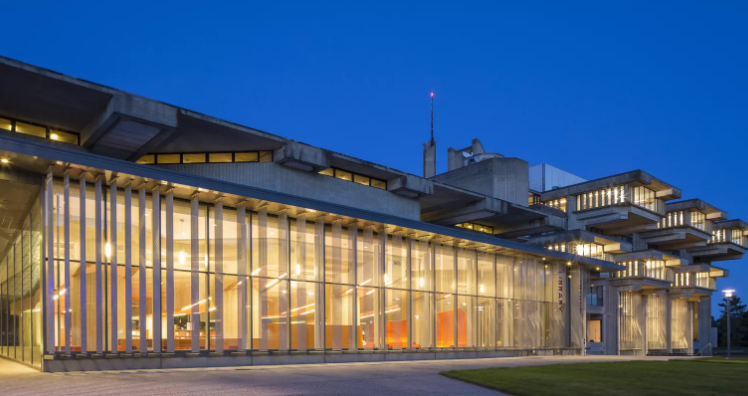
Conceived in 1963 as a utopian community by architect Paul Rudolph, the UMass Dartmouth campus remains a tour de force of late 20th century architectural exuberance and optimism. The Claire T. Carney Library is the 160,000-square-foot centerpiece of the concentric campus plan. designLAB’s transformation celebrates the historic architecture, while creating a state-of-the-art learning environment, improved group study spaces, a cafe, a lecture space, and a new campus living room. Inspired by Rudolph’s original design intentions, the renovation included the re-introduction of a vibrant color palette, bold supergraphics, and dynamic social spaces. Photo: Jonathan Hillyer
Writers Theatre; Glencoe, IL
Studio Gang
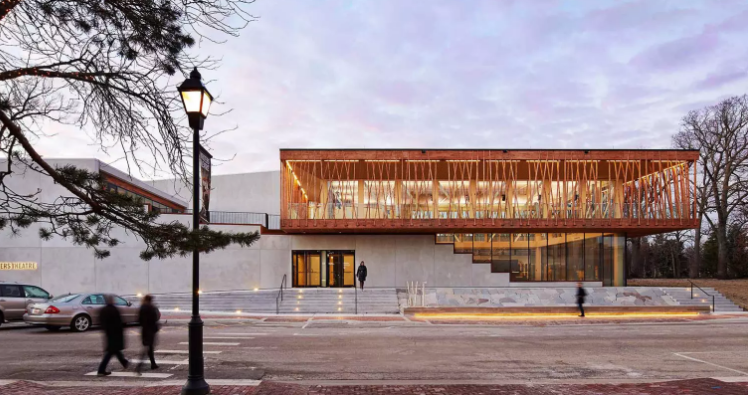
While functional requirements of performance venues often dictate opaque volumes, the 36,000-square-foot Writers Theatre is instead a transparent cultural anchor that embraces its community. A double-height lobby provides a flexible space for outreach, gatherings, and performances, with glass doors that open to the adjacent park. Clad in wood hewn from the site, box office and concessions are treated as furniture, integrated into flexible lobby tribune seating. A canopy walk hung from timber trusses provides an open-air gathering place before, after, and between shows. The two stages are configured to enhance the intimacy for which Writers is known while creating new opportunities for innovative performance. Photo: Steve Hall © Hedrich Blesssing
Institute Honor Awards for Regional & Urban Design
Cleveland Civic Core; Cleveland
LMN Architects

Cleveland’s civic center is one of the most completely realized examples of the City Beautiful movement in U.S. city planning that flourished during the late 1800s. In 1903, architect/planner Daniel Burnham designed the Mall—a large public park flanked by major civic and government buildings on a bluff above Lake Erie. One hundred years later, the Cleveland Civic Core project continues Burnham’s vision while reimagining it for the 21st century, weaving together two public assembly facilities with civic green space to catalyze a dramatic revitalization of the downtown core. Photo: Ed LaCasse
Philadelphia 30th Street Station District Plan; Philadelphia
Skidmore, Owings & Merrill
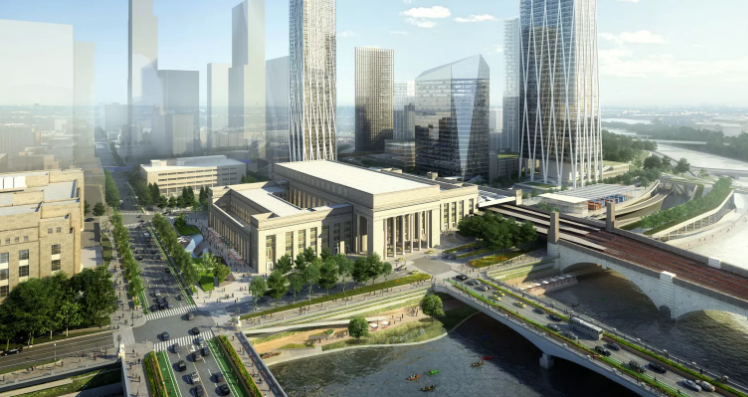
The master plan for Philadelphia’s 30th Street Station District, created through the partnership of Amtrak, Brandywine Realty Trust, Drexel University, PennDOT, and SEPTA, and developed by SOM in association with WSP | Parsons Brinckerhoff, OLIN, and HR&A Advisors, will realize the long-awaited vision of a mixed-use urban district centered on a vibrant transportation hub. The plan, determined through a broad and inclusive public process, creates a sweeping transformation of the historic station and the 88-acre rail yard it anchors to build a new neighborhood above the district’s complex transportation infrastructure. Rendering: Courtesy SOM / © Amtrak
Reinventing Vilonia; Vilonia, Arkansas
UA Community Design Center
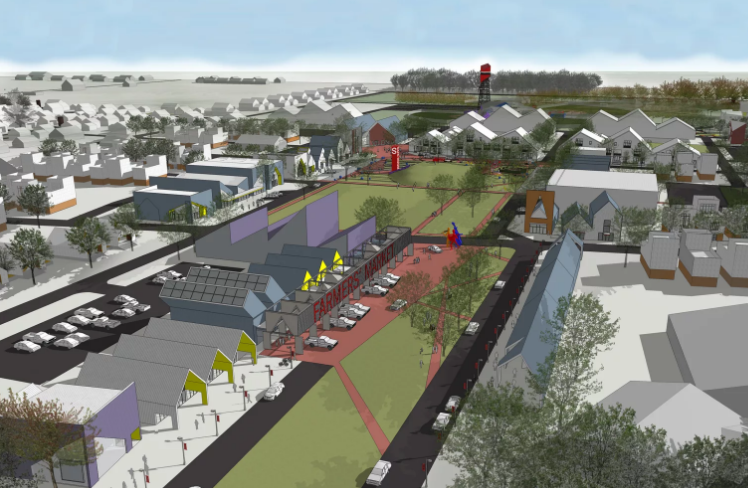
The town of Vilonia was leveled by an EF-4 tornado that killed 11 people in 2014. The reinvention plan, unanimously adopted by the city council in 2015, is built upon a new strategy to employ underground safe rooms as a municipal planning format that can be transferred to other towns susceptible to tornados. To deal with these issues, the plan calls for the implementation of a “safescape” comprising a modulated system of shipping containers buried underground. By combining the network of safe rooms with a park system and new town loop, residents and visitors will be within a five-minute walk of safety during a tornado. Rendering: University of Arkansas Community Design Center
Regeneracion: A vision for the campus and district of the Tecnologico de Monterrey, Mexico; Monterrey, Mexico
Sasaki Associates
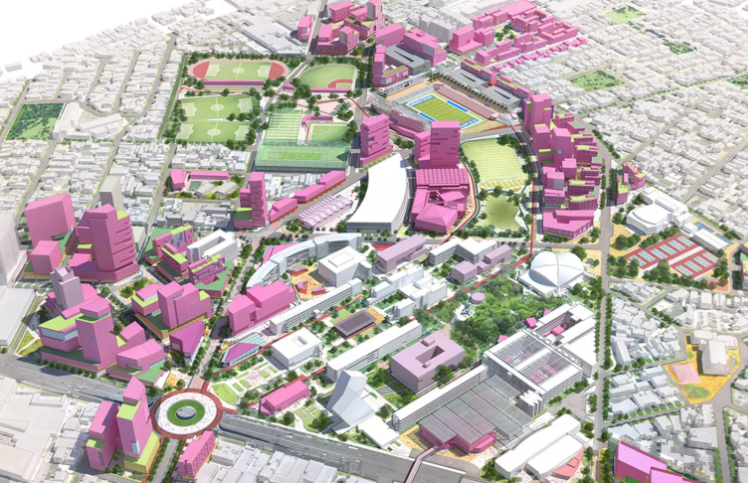
“Regeneración”, the new Framework Plan for Monterrey Tec’s flagship campus rethinks the institution’s relationship to its complex urban setting to make a new kind of contribution to the city, the country, and the very nature of higher education in Mexico. Inter-disciplinary learning, mixed-use R&D clusters and cultural facilities are carefully connected to the district by a strong public realm, reinforcing synergies with surrounding neighborhoods. The plan reflects a new pedagogical vision, and sets the stage for continued expansion of the Tec’s influence as an engine of innovation and development in Mexico. Rendering: Sasaki Associates
Rock Chapel Marine; Chelsea, Massachusetts
Landing Studio

A shared-use road-salt transshipment facility and recreation and habitat landscape, Rock Chapel Marine is a new model for the integration of active industrial uses with public access on the working waterfront. Through design, the project interweaves industrial operations with everyday life, making use of the seasonal nature of the salt industry to expand public recreation during the summertime and then return to industrial use in the winter. Structures from the site’s former use as an oil terminal are re-appropriated throughout, creating new forms of public engagement with the working waterfront. Photo: Landing Studio
The juries for the three categories were:
Institute Honor Award for Architecture
Mark Reddington, FAIA (Chair), LMN Architects; Gregory P. Baker, AIA, HNTB Architecture; David Cordaro, AIAS Representative; Leslie K. Elkins, FAIA, Leslie K. Elkins Architect; Timothy J. Johnson, AIA, NBBJ; William Q. Sabatini, FAIA, Dekker/Perich/Sabatini; Adrian D. Smith, FAIA, Adrian Smith + Gordon Gill Architecture; Beatrice Spolidoro, Assoc. AIA, Rothschild Doyno Collaborative and Marilyn Terranova, PhD, Interim Superintendent, Pocantico Hills CSD.
Institute Honor Award for Interior Architecture
Hagy Belzberg, FAIA (Chair), Belzberg Architects; Jodi R. Ernst, AIA, Universal Studios; Karen Fairbanks, AIA, Marble Fairbanks; Paula Peer, AIA, Trapolin-Peer Architects and Jim Poteet, FAIA, Poteet Architects, LP.
Institute Honor Awards for Regional & Urban Design
Susan Chin, FAIA (Chair), Design Trust for Public Space, New York City; David W. Benn, AIA, Cho Benn Holback + Associates, Inc.; James S. Bershof, FAIA, OZ Architecture; Sheila Kennedy, FAIA, Kennedy & Violich Architecture, Ltd. And Robert L. Ooley, FAIA, Santa Barbara County Government, Office of the County Architect.
Related Stories
AEC Tech Innovation | Jul 4, 2024
Caution competes with inevitability at conference exploring artificial intelligence for design and construction
Hosted by PSMJ, AEC Innovate in Boston found an AEC industry anxiously at the threshold of change.
Building Team | Jul 3, 2024
So you want to get published: What’s next?
In the AEC industry, securing media attention is no longer a niche endeavor but an essential component of a holistic marketing strategy.
Laboratories | Jul 3, 2024
New science, old buildings: Renovating for efficiency, flexibility, and connection
What does the research space of the future look like? And can it be housed in older buildings—or does it require new construction?
MFPRO+ New Projects | Jul 2, 2024
Miami residential condo tower provides a deeded office unit for every buyer
A new Miami residential condo office tower sweetens the deal for buyers by providing an individual, deeded and furnished office with each condo unit purchased. One Twenty Brickell Residences, a 34-story, 240-unit tower, also offers more than 60,000 sf of exclusive residential amenities.
Student Housing | Jul 1, 2024
Two-tower luxury senior living community features wellness and biophilic elements
A new, two-building, 27-story senior living community in Tysons, Va., emphasizes wellness and biophilic design elements. The Mather, a luxury community for adults aged 62 and older, is situated on a small site surrounded by high-rises.
Office Buildings | Jul 1, 2024
Mastering office layouts: 5 primary models for maximum efficiency and productivity
When laying out an office, there are many factors to consider. It’s important to maximize the space, but it’s equally important to make sure the design allows employees to work efficiently.
Smart Buildings | Jul 1, 2024
GSA to invest $80 million on smart building technologies at federal properties
The U.S. General Services Administration (GSA) will invest $80 million from the Inflation Reduction Act (IRA) into smart building technologies within 560 federal buildings. GSA intends to enhance operations through granular controls, expand available reporting with more advanced metering sources, and optimize the operator experience.
Sustainability | Jul 1, 2024
Amazon, JPMorgan Chase among companies collaborating with ILFI to advance carbon verification
Four companies (Amazon, JPMorgan Chase, JLL, and Prologis) are working with the International Living Future Institute to support development of new versions of Zero Carbon Certification.
K-12 Schools | Jul 1, 2024
New guidelines for securing schools and community spaces released by the Door Security and Safety Foundation
The Door Security and Safety Foundation (DSSF), in collaboration with Door and Hardware Institute (DHI), recently released of “Are Your Door Openings Secure?.” The document provides guidelines to equip school administrators, building management personnel, and community leaders with a clear roadmap to create a secure and safe environment.
Products and Materials | Jun 30, 2024
Top products from AIA 2024
This month, Building Design+Construction editors are bringing you the top products displayed at the 2024 AIA Conference on Architecture & Design. Nearly 550 building product manufacturers showcased their products—here are 17 that caught our eye.

















